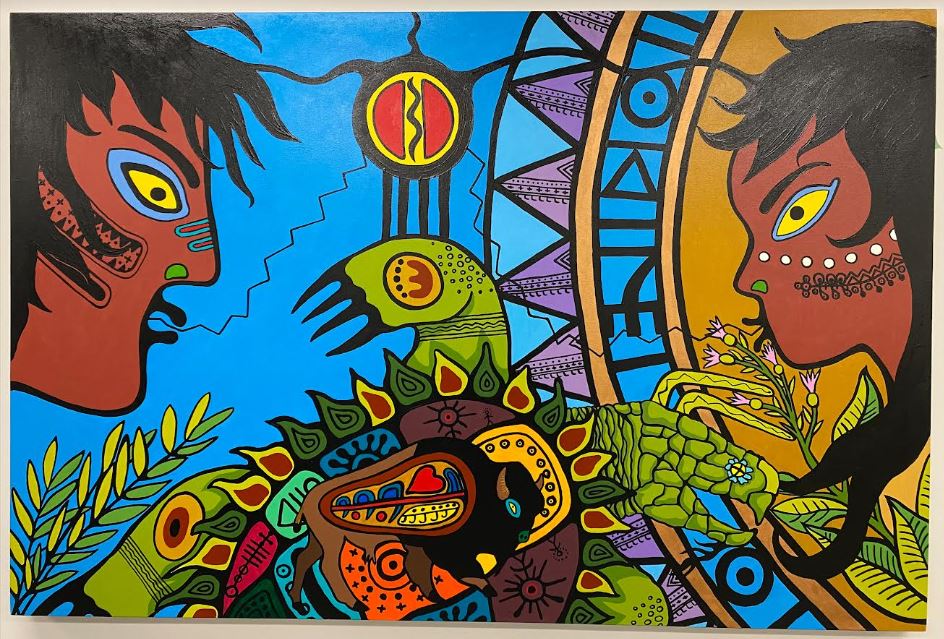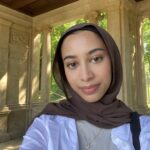
Listen to the story here:
Students visiting the Sally Horsfall Eaton Centre building on campus might notice a new art piece hung on the sixth floor.
Morning Star at the Eastern Doorway is a painting by Philip Cote, an artist and activist from Moose Deer Point First Nation.
The painting depicts a man and woman face-to-face, with a power symbol above them — a turtle in the middle and a bison on its back.
The yellow in the east and the black in the west represent life and death with the turtle in the centre representing Turtle Island, explained Cote during the painting’s virtual unveiling at the university’s Faculty of Community Services (FCS) Wednesday morning.
The faculty includes Toronto Metropolitan University’s schools of childcare, early childhood studies, nursing and other service schools.
“Our stories have been eliminated from the landscape,” he said. “So this painting…is about bringing that original philosophy back into a common place where people will see it.”
The painting demonstrates “other realities, other knowledges, other truths” that help “expand the way we are in this world,” said Kiaras Gharabaghi, dean of the faculty.
Lynn Lavallee who is Anishinaabe registered with the Métis Nation of Ontario and the strategic lead of Indigenous Resurgence — a position developed in 2019 by FCS to action the faculty’s commitments to equity and inclusion — helped organize the artwork’s installation.
The painting is hung in the dean’s boardroom, which remains locked for now, inaccessible to students or professors, because there have been break-ins and vandalism in the office, said Lavelle via email.
She said she hopes once offices become more used “to their capacity…we will be able to leave our front door unlocked as well as the boardroom once we have staff there on a continual basis.”
The theme of the art is inspired by the medicine wheel, which symbolizes teaching of health and healing, according to Tribal Trade, a site run by members of the Anishnaabek nation of Curve Lake First Nation. The East, on the medicine wheel, is yellow, representing where the sun rises, and symbolizes “the beginning, the new beginning of life,” they write.
Lavallee said, “We are on the eastern part of the university. So there’s a real significance to the geography of the building as well as our connection.”
Cote said he feels the work can be as educational to Indigenous students as it is to non-Indigenous students.
Many Indigenous students are “in the same place as many non-Indigenous students” because Indigenous culture can be elusive and so much has been erased, Cote said.
He said an important aspect of his art is incorporating research and history into his work.
“The accuracy is important to me… so that people can reference my work if they ever need to, if they’re in the process of writing about parts of our culture,” Cote said. “Art is a great place to connect with people about our culture…and what a great place to do it at these institutions of learning.”
Lavallee said the painting should help Indigenous peoples “feel welcomed and accepted” at TMU.
“This painting carries spirit. When you have an artist who creates something, they put their spirit into that artwork,” she said. “It’s about the knowledge that artwork creates.”
Lavallee quoted Métis political Louis Riel to underscore her point. As Riel said: “My people will sleep for one hundred years, but when they awake, it will be the artists who give them their spirit back.”
Copy-editor, On The Record, Winter 2023.
Copy-editor, On The Record, Winter 2023.
Copy-editor, On The Record, Winter 2023.

